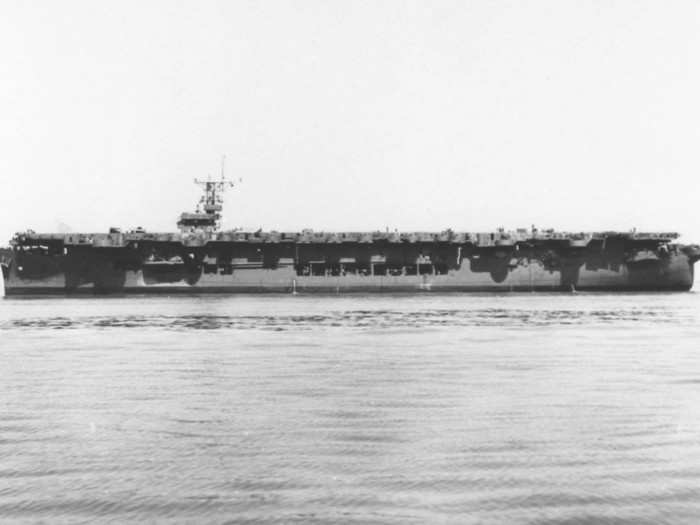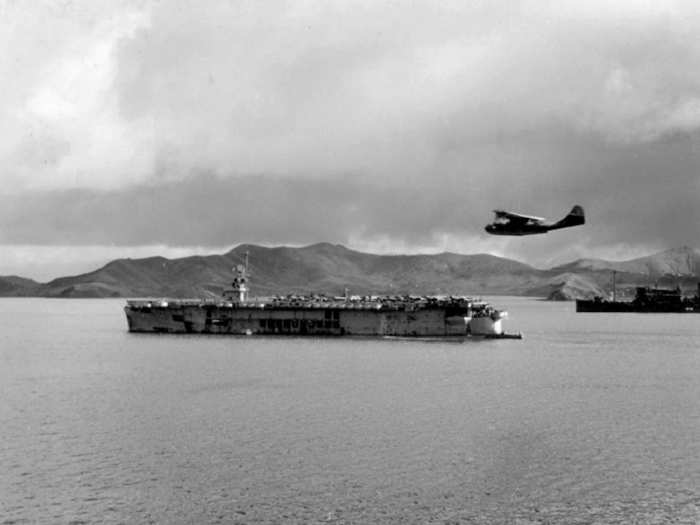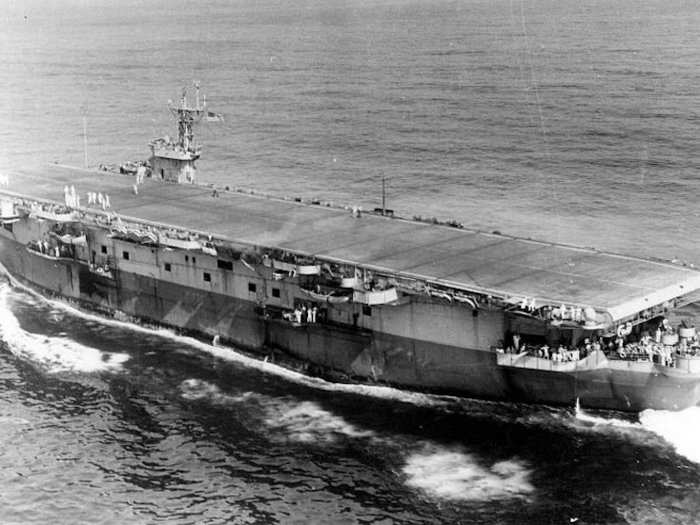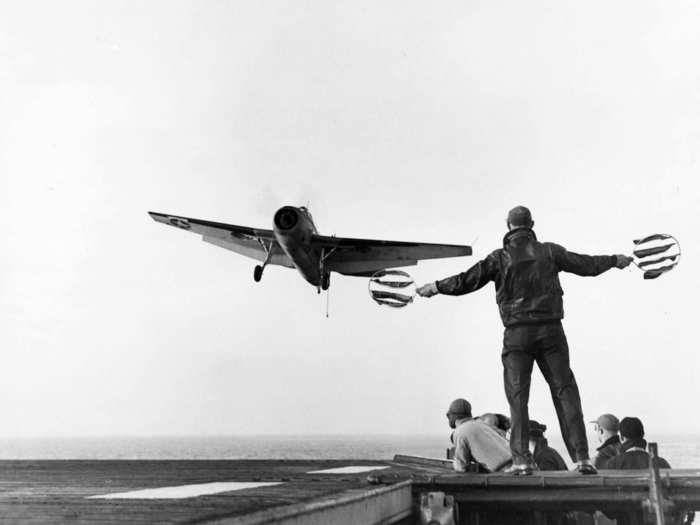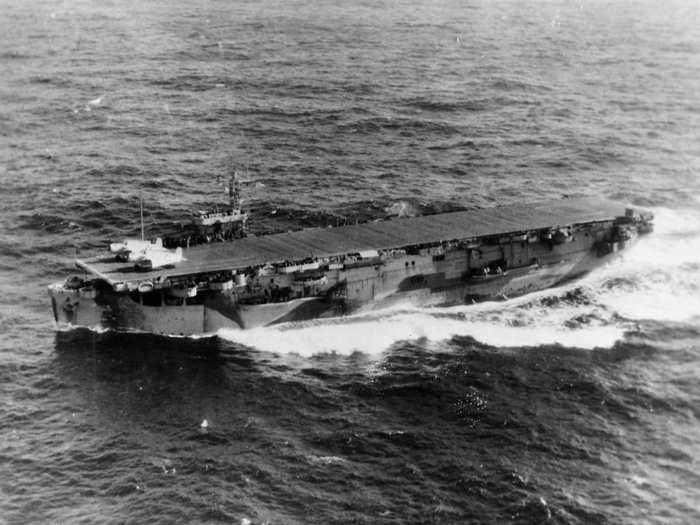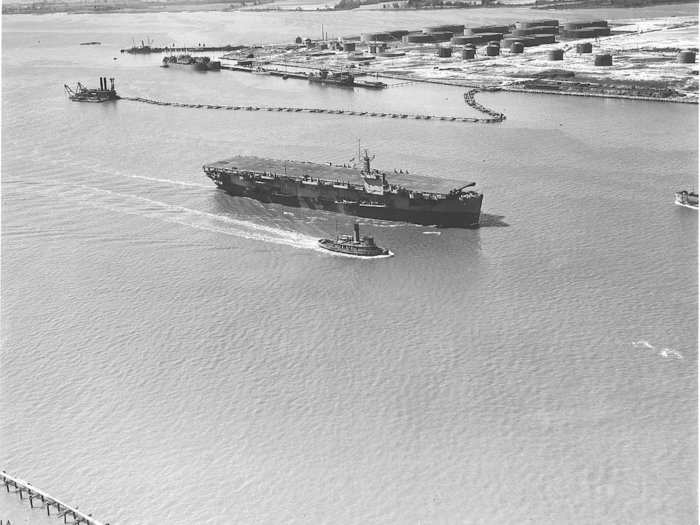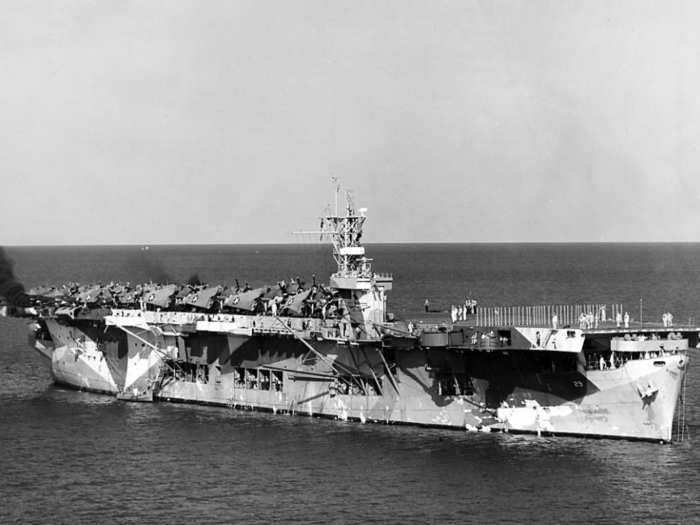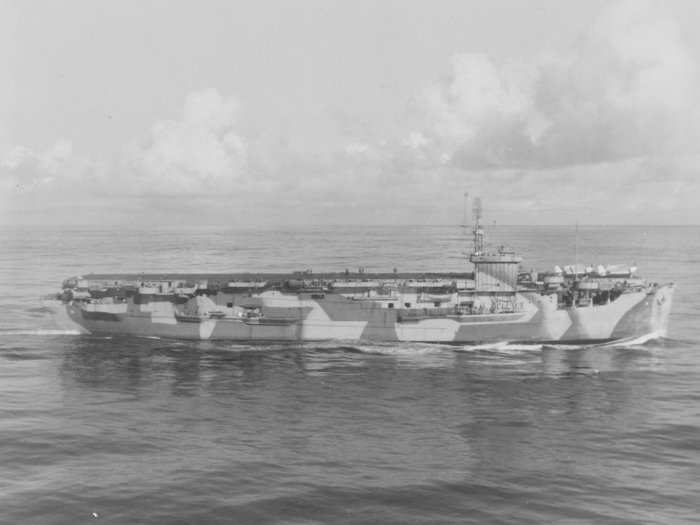The US then built four more from oiler hulls, including the Chenango, which were sent to help with landings in North Africa, where they proved extremely successful in anti-submarine warfare. This led to the building of dozens more and deployments to the Pacific.
In total, the US built and launched 78 escort carriers between 1941-1945.
Source: US Navy
Escort carriers had initially been used to protect convoys, ferrying planes, among other duties. But by 1943, the US had evolved its tactics to hunt and kill U-boats.
In may 1943, the USS Bogue scored the first escort carrier kill of a German U-boat after spotting the surfaced U-231 and sent a Grumman TBF Avenger torpedo bomber after it, which released four depth bombs and took it out as it tried to submerge.
But what led to the escort carriers' eventual success over the German U-boats was the Allies code-breaking U-boat radio traffic in 1943, providing escort carriers with accurate locations of enemy submarines.
This breakthrough also allowed the Allies to hunt and kill German U-tankers, or "Milch Cows," which refueled the short-range U-boats at sea.
By the war's end, escort carriers had sunk a total of 53 German U-boats.

